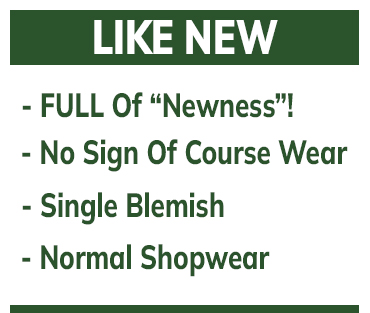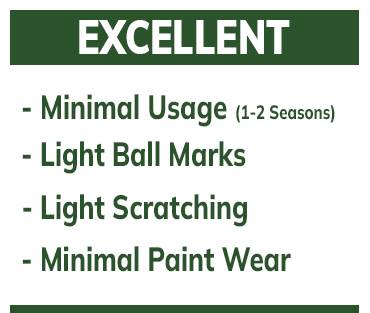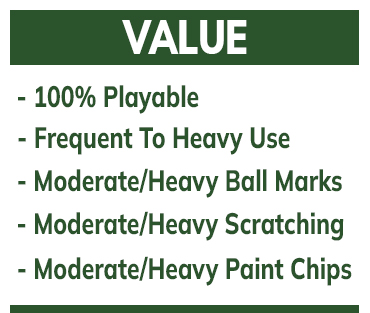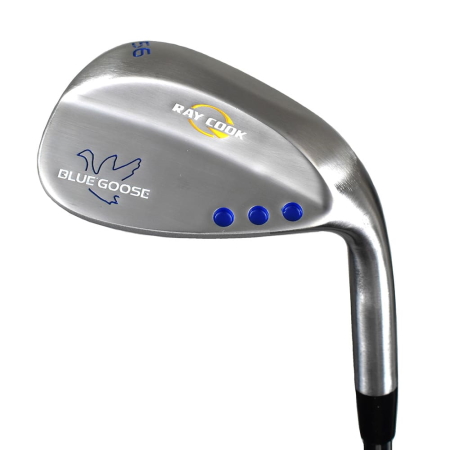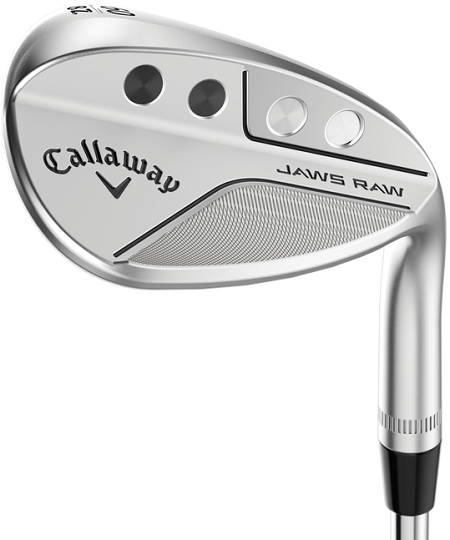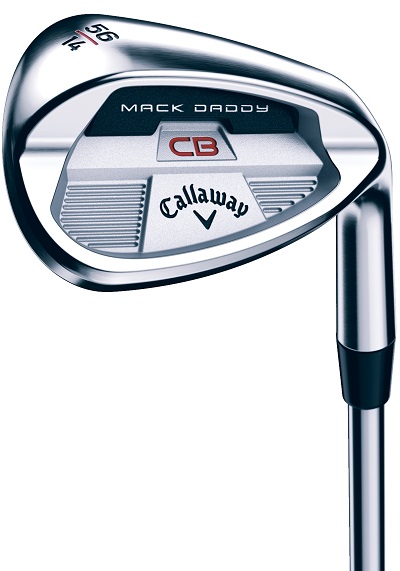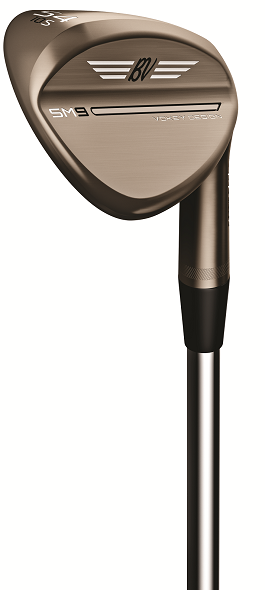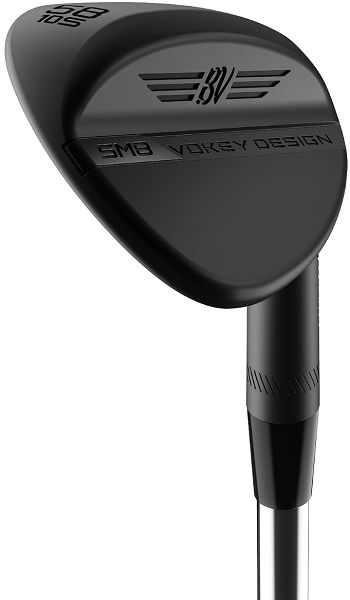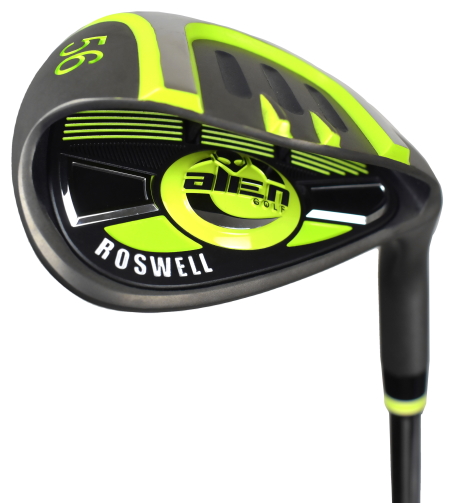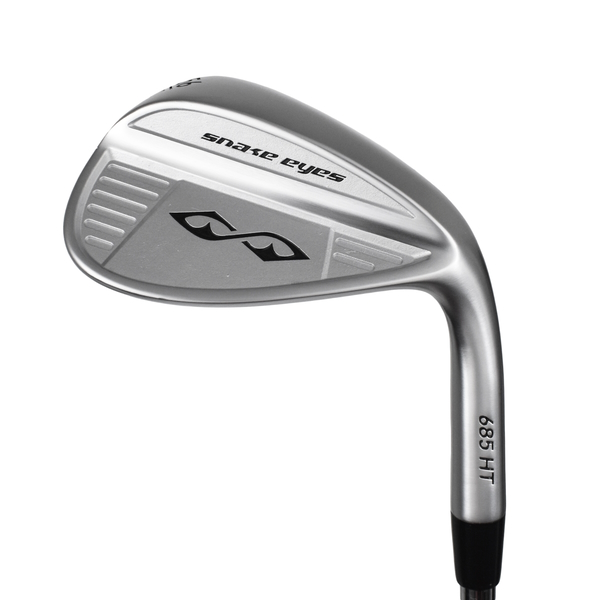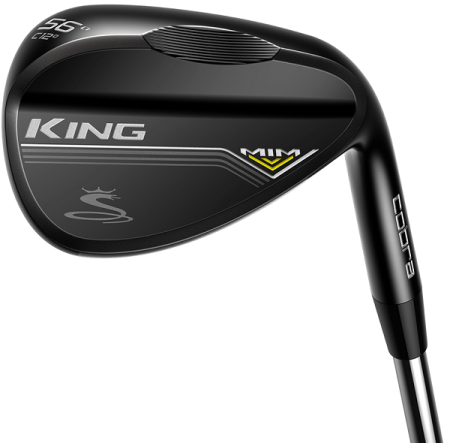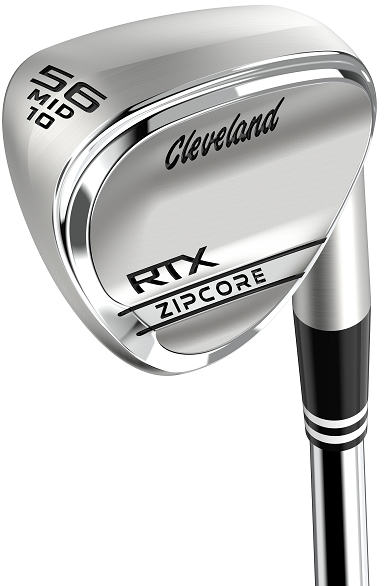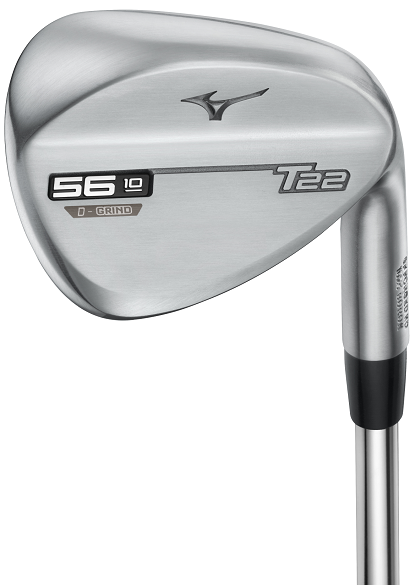
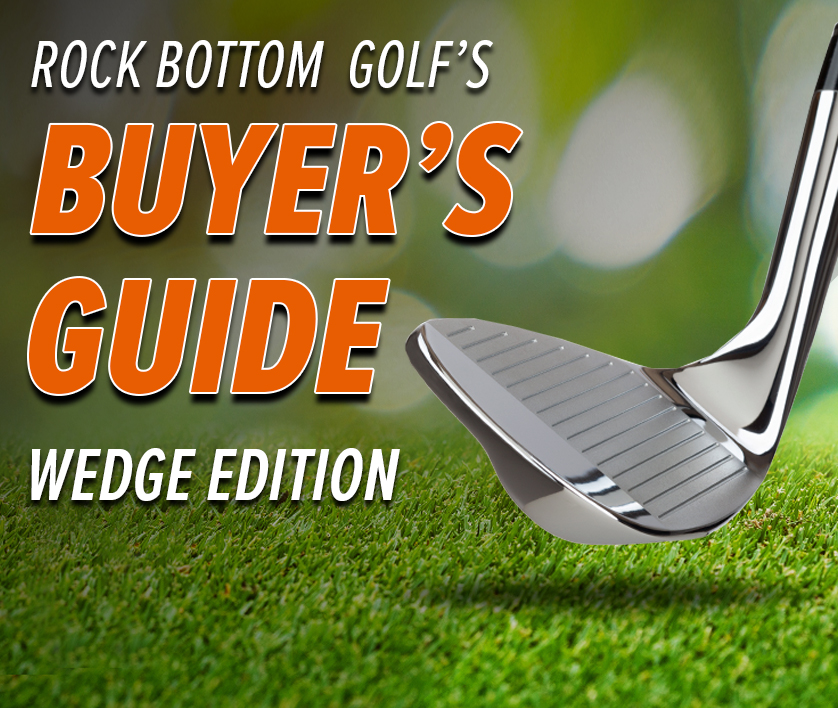
Table Of Contents: Golf Wedge Buyer's Guide
What Golf Wedge Should You Buy
The right equipment on the golf course can be the difference between success and failure. Accordingly, the ability to traverse the terrain and stay under par is essential for success. Navigating bunkers, rough terrain, and difficult shots require a specialized type of club to get you up and over these challenges. A versatile option for most golfers would be a wedge with a loft between 54 to 60 degrees. This range is suitable for a variety of shots, including sand traps and short approaches.
Any experienced golfer knows that wedges are integral to your golf equipment. Here is a breakdown of the various types of wedges, their critical components, and some of the most popular golf wedges made by top golf manufacturers.
Types Of Wedges
There are multiple types of wedges. Each exists to help you overcome terrain challenges on the golf course. Here are the four major categories of wedges:
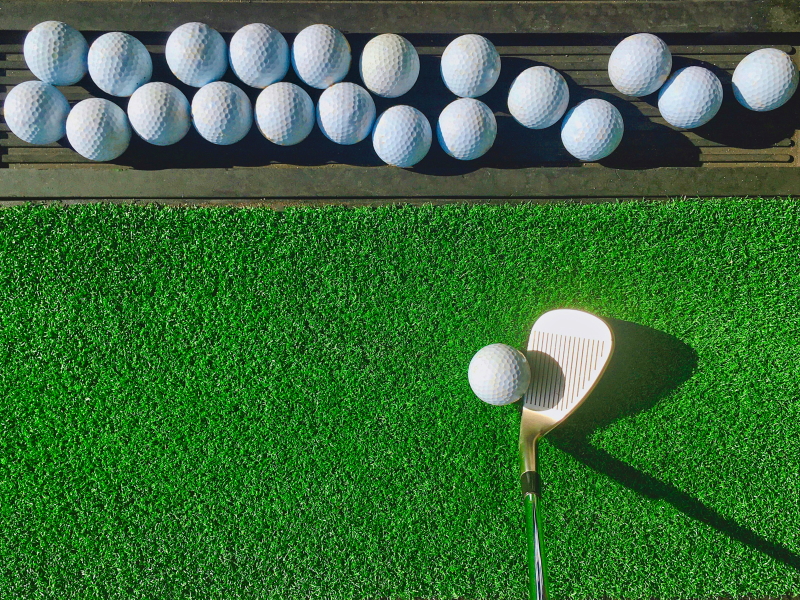
-
Pitching Wedge
Many consider it the most prolific of the group, and it has the lowest loft of any wedge. A pitching wedge is best used on approach shots outside the green.
-
Gap Wedge
The gap wedge fills the loft gap between a pitching wedge and a sand wedge.
-
Sand Wedge
The aptly named sand wedge stands ready to get you out of some of the most challenging conditions you will face on the course. This wedge is ideal for bunkers or rough terrain.
-
Lob Wedge
The lob wedge is the highest lofted wedge. The loft is perfect when you need to drop the ball onto the green from a lower position in the rough or fairway.
Which Wedges Do Most Golfers Carry?
Naturally, there isn't unlimited space in your golf bag. Many golfers wonder how many wedges you should carry. While there are golfers who take all four wedges, there are many that do not. For example, some golfers don't use the lob wedge during most rounds. And some golfers may only use a pitching wedge and a sand wedge. On the flip side, you may be in the middle of a game and find yourself without the best wedge for the current shot. In that case, you may be at a huge disadvantage when you need a precision angle from a club you do not have.
How Many Wedges Should Your Golf Bag Hold?
The general rule of thumb is to carry three wedges in your golf bag –– a pitching wedge, sand wedge, and lob wedge. However, many professional players will have five or more wedges in their bags to provide the most options possible and increase their chances of success.
That said, many golfers still question –– the number of wedges your golf bag should house. For example, some golfers don't use the lob wedge during most rounds, and some golfers may only use a pitching wedge and a sand wedge. On the contrary, you may be in the middle of a game and find yourself without the best wedge for the current shot, inevitably placing yourself at a considerable disadvantage.
However, you can't predict every outcome in life, in golf or any other sport. So, it's essential to remember that success doesn't come without failure, and sometimes when you find yourself at a disadvantage –– it's in those moments you still find a way to shine!
Juniors, Women, & Handicap Golfers: What Are The Best Wedges?
When choosing the best wedges for juniors, women, and handicap players, the most important factor is –– the skill level each player has. If the player is a beginner or intermediate golfer, choosing a basic wedge that offers adequate control and forgiveness is best. Advanced players may require a higher-level wedge with more features and improved performance.
The shaft flex should also be considered when choosing the best wedges for juniors, women, and handicap golfers. Flexible shafts provide more control and accuracy, while stiffer shafts offer greater distance potential. For beginner golfers, selecting a wedge with less loft may be beneficial, providing more control and precision.

Basic Components When Choosing A Wedge
Like all golf clubs, there are criteria you want to consider when choosing what is best for you. And this involves several factors. Here are some of the most essential things to consider before you select what is going in your golf bag.
Loft
One of the most crucial factors in understanding wedges is the loft. The loft is the angle of the club face. Manipulating the golf club's loft increases the angle or height the ball goes after it is struck. Any club face has a set position or angle to determine height when the ball is hit. For wedges, the loft is usually higher than other clubs.
Loft Angles
Each category of the wedge has a specific loft range. Each loft range is designed for the different situations you will run into on the golf course. Here are the typical loft ranges of the four types of wedges.
- Pitching Wedge: 47 to 53 degrees
- Gap Wedge: 50 to 54 degrees
- Sand Wedge: 54 to 58 degrees
- Lob Wedge: 58 to 62 degrees
As you can see, each wedge category has a distinct loft range. Each range is designed to match the ball's flight path with the situation you are facing while playing.
Loft Rotation To Ball Flight
The loft rotation of a golf club is an essential factor in the ball flight. The higher the loft, the higher and shorter the ball's trajectory. Understanding how loft affects your shot will help you improve your game and increase accuracy on the course.
It's essential to understand the effect of loft on the height and distance of a given shot. For example, a higher loft angle will cause the ball to fly higher but cover less distance than a club with a lower loft angle. Increasing the loft angle generally leads to a higher ball flight with a steeper descent, which results in less roll after landing. Understanding this can be helpful when playing shots in tight situations or near hazards.
It's incorrect to state that if you increase your loft by one degree, your ball will travel around 12 yards longer but slightly lower. In fact, increasing the loft will make the ball fly higher and cover less distance, not longer.

Bounce
Another essential factor of a wedge is bounce. Simply put, bounce is the angle of the sole of the club face to the ground. Low bounce means the camber or arch of the wedge is closer to the ground. And this means the sole of the club head will have more contact with the ground. Inversely, high bounce means the angle of the sole of the club head is steeper. Naturally, this will result in less contact with the ground on your swing. But this brings us to an important question. When do you need low bounce, and when do you need high bounce? Here is a breakdown of where the different types of bounce are used:
Low Bounce
A great way to remember low bounce is to remember that low bounce means the club will make more contact with the ground. Hence, it is lower to the ground. The key is that the club's base will have more contact with the surface on each shot. A low bounce is a good choice on a tighter, flatter surface. Also, how you play will determine if you need low bounce. Low bounce is a good choice if you have a smooth sweeping stroke that doesn't plow or disrupt the surface with divots.
High Bounce
At the opposite end of the spectrum is high bounce. As the name implies, the sole of the club head is angled higher off the ground. This bounce is designed to reduce contact with the surface when you swing the wedge. High bounce is suited for soft surfaces that are less cooperative. Sand, mud, rough turf, or any surface inhibiting velocity means you want to have a wedge with a high bounce. Also, a high bounce is appropriate if your stroke tends to turn up divots.
Grind
As you get deeper into the mechanics of a wedge, you cannot overlook grind. Grind is the geometry of the bottom of the sole. This area can be milled into different shapes. Naturally, these shapes will alter how the club interacts with the turf. Here is a simple breakdown of the basic grinds and some of their characteristics:
- M: This is the most versatile design and is suitable for overall playability.
- L: This is better for smoother, flatter conditions or players that do not make as much contact with the ground.
- K: The K is the widest sole. And this grind is a good choice if you are heavy-handed with the wedge, leaving divots and deep indentations after contact.
- D: This grind is designed for bounce and is wider than other grinds. It is good for challenging turf like sand or rougher terrain.
- S: A versatile universal design that can be used on most turf conditions.
- F: Another versatile wedge grind that is good for sand.

Grooves
One of the most recognizable features of a wedge is the grooves. These are the indentations on the front of the club's face. They grip the ball at the moment of impact. They can also help provide spin. Sharp, well-defined grooves are necessary to create a spin on the ball.
Club Head Shape
Since every inch in golf counts, every innovation you can make to the club is just as important. The design of the club head is another area that can have an impact on your game. Here are the types of club heads:
- Traditional: This is the traditional wedge design that is similar to the irons.
- Game Improvement: These clubs are designed for less experienced players with features that make them easier to use.
- High Toe: This design features grooves that continue up to the toe of the club head itself.
Certified Pre-Owned Wedges
Every Golf Wedge is different, and you should be able to take advantage of the brand and model that best meets your requirements. The golf club that performs well for the pros on tour may not be the same club that works best for all golfers. You should be able to try different clubs to find the best one for your individual playing style. That is also why buying Pre-Owned Clubs is such an excellent and practical solution.
You do not have to purchase new to get a name-brand quality wedge. Our certified pre-owned wedges offer top-name brands at a lower price point. Many are also backed with our Certified Pre-Owned Guarantee. Each used club we receive is meticulously inspected and rated appropriately.
Click on the pre-owned categories below to find out more!
The Main Takeaway?
Wedges may be the most important club in your bag. It is essential for golfers who want to evolve their game to be familiar with the distinctions between each type of wedge and all wedge characteristics like grind type and loft profiles. Using and understanding the golf wedge is essential and can mean the difference between a win or loss. So, familiarizing yourself with each wedge type and carefully choosing which wedges to add to your bag is crucial to a low-scoring game.
Best Golf Wedges For 2024
The most popular wedges today are broken down by brand below, along with a description of the distinguishing characteristics of each club.
TaylorMade
TaylorMade Golf Hi-Toe 3 Wedge
What are the essential elements of a strong short game? Versatility and imagination are essential. Get the ability to imagine a range of shots as well as the tools to execute them. Introducing TaylorMade's Hi-Toe 3 wedges. Swiss-Armify your game by using a single tool for all shots. Tricky shots around the green need a subtle touch or a wedge that has been expertly built to manage any circumstance. Hi-Toe 3 delivers saucy spin around the greens when the face is rotated open, thanks to full face scoring lines and Tour-proven raised micro-ribs.
Ray Cook
Ray Cook Golf Blue Goose Satin Wedge
The Ray Cook Golf Blue Goose Satin Wedge can help add a new level of precision to your golf game. Featuring a tour-proven wedge design, this club is designed to give you control as well as forgiveness with every shot. The club features a durable non-glare satin finish. The long face score lines help you to get more grip on the ball and help to give you spin control. Coupled with a soft rubber grip, you get a balanced combination of loft and bounce to help you play your best.
Callaway
Callaway Golf JAWS RAW Chrome Wedge
Jaws Raw adds raw scoring power to your wedge game. The most aggressive grooves in golf, combined with a raw face that produces maximum spin. For the first time, Callaway has used tungsten technology in a wedge, resulting in a weight-balanced club that provides both feel and control. These innovative technologies are tempered by Roger Cleveland's 40+ years of developing some of the most sought-after wedges in golf.
Callaway Golf Mack Daddy CB Wedge
The Callaway Golf Mack Daddy CB wedge is built to be lightweight and help enhance your short game. It features two highly effective grind patterns built with a cavity-back design. These grind patterns help you play smooth surfaces or challenging turf like bunkers or the rough. Proprietary JAWS technology gives you sharp grooves on the clubface for maximum control and lots of spins.
Titleist
Titleist Golf Vokey SM9 Brushed Steel Wedge
Introducing SM9. Anyone can make a wedge, but it takes a master to transform a piece of high-performance technology into a creative control instrument. Bob Vokey's six tour-proven grinds are meant to provide creativity, versatility, and consistency, and have been methodically developed over years of working with the world's finest players.
Titleist Golf Vokey SM8 Jet Black Wedge
Backed by extensive research and development, the Titleist Golf Vokey SM8 Jet Black Wedge represents one of the most advanced wedge designs available. Titleist SM8 technology means the center of gravity on Vokey wedges has been moved forward. The benefit of this is that it helps to make sure the club face stays square on impact. SM8 technology also features a variety of unique grinds to match the unique needs of players. Another benefit of SM8 technology is grooves cut to the edge. These grooves help maximize spin and give you more control.
Alien
Alien Golf Roswell Wedge
Alien Golf spent years developing the Alien Roswell® Wedge. Knowing that 65% of shots in a round of golf are played inside 120 yards of the hole necessitates the use of the proper wedge. The Alien wedge has a deep cavity and a broad Gravity Rail sole design that lets the golf ball to rise up high rapidly and fall softly with amazing spin and control. The full-face CNC milled grooves and Laser engraved face work together to provide the aggressive Spin required for all shot types. The scientifically engineered Gravity Rail System Sole on our Alien wedge will help you to tackle the most challenging lies the course throws at you, from the feared bunker shot to the tight lies around the green as well as the deep rough. Simply align yourself square to your target and let the Alien Roswell® wedge do the rest. The Alien wedge also has a patented Space GelTM vibration dampener that is reinforced by dual stabilizing bars that combine forces to provide incredible feel and forgiveness. With its unusual features, aesthetics, and performance, the Alien Roswell® wedge is out of this world!
Snake Eyes
Snake Eyes 685HT High Toe Tour Satin Wedge
The Snake Eyes 685HT boasts a bigger groove area compared to traditional wedges, offering enhanced control and spin capabilities. Its low center of gravity instills confidence in executing the desired shot, regardless of the lie. This Snake Eyes wedge features a large groove surface to deliver optimal control and spin. Its versatile sole design accommodates various playing conditions, while the wedge flex steel shaft ensures top-notch performance. Additionally, the club is equipped with a high-quality Snake Eyes rubber grip for enhanced comfort and handling.
Cobra
Cobra Golf King MIM Black Wedge
The Cobra Golf King MIM Black Wedge is the product of precision technology where no detail is left to chance. Each wedge begins as a mixture of highly refined and malleable 304 stainless steel powder. From here, it is placed into a sintering machine that uses heat and pressure to produce an even grain structure throughout the metal. And this creates a much higher quality club than a cast or forged wedge. Beyond actual play, this club has technological integrations to help you golf better. Track every shot with Cobra Connect. Powered by Argos Golf, make better decisions on the course using your smartwatch or smartphone.
Cleveland
Cleveland Golf CBX Full Face Wedge
The Cleveland CBX Full-Face Wedge is a versatile and forgiving wedge that is intended primarily for extreme open-face shots around the green. The wide sole and overall blade shape take the fear out of flop shots, allowing dedicated golfers to achieve incredible feats of greenside finesse. Hit more extreme open face strokes with a larger toe portion, which is ideal for sliding under the golf ball and striking it on the toe.
Cleveland Golf RTX Zipcore Tour Satin Wedge
The Cleveland Golf RTX Zipcore Tour Satin Wedge is the perfect wedge to bring consistency to your game. The Cleveland Golf RTX Zipcore Tour Satin Wedge features RTX Zipcore Technology. This low-density core technology helps you play better consistently. And this goes hand in hand with the Ultizip grooves, which enhance control and spin on every swing. The Cleveland Golf RTX Zipcore Tour Satin Wedge also offers versatility with the grind options. The three distinct grind options make sure this club aligns seamlessly with your playing style. Whether you have a smooth sweeping stroke or leave divots, this wedge is the right tool to up your game.
Mizuno
Mizuno Golf T22 Raw Wedge
Mizuno wedges are unrivaled for touch and feel around the green thanks to more than fifty years of honing our Grain Flow Forging technique in Hiroshima, Japan. Played by Luke Donald, one of the finest short-game players of any generation. The T22 wedge features a soft feel copper underlay and four degrees of sole grind for different styles and situations.


